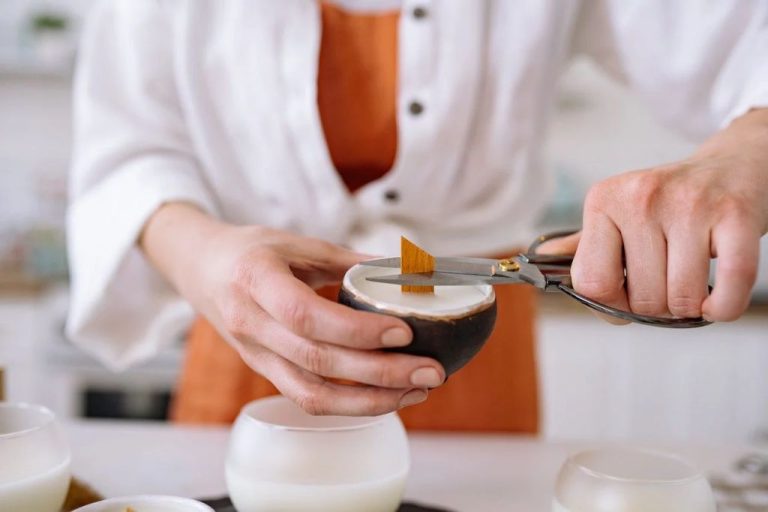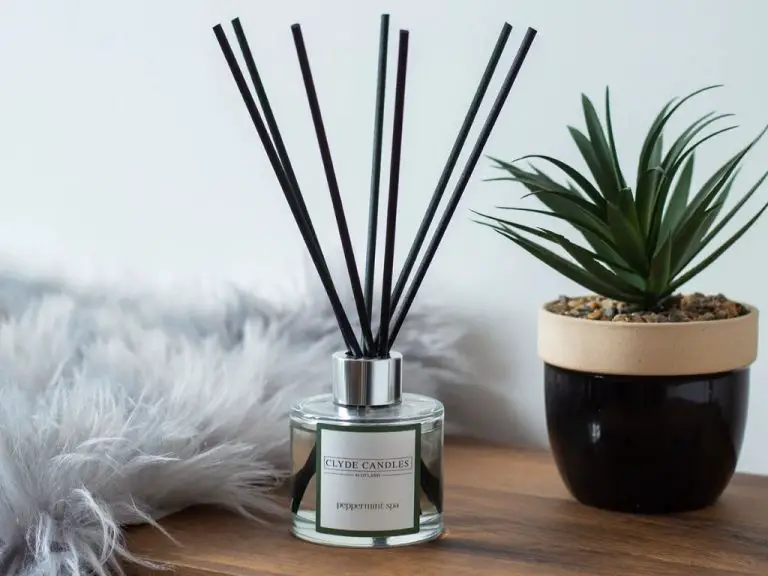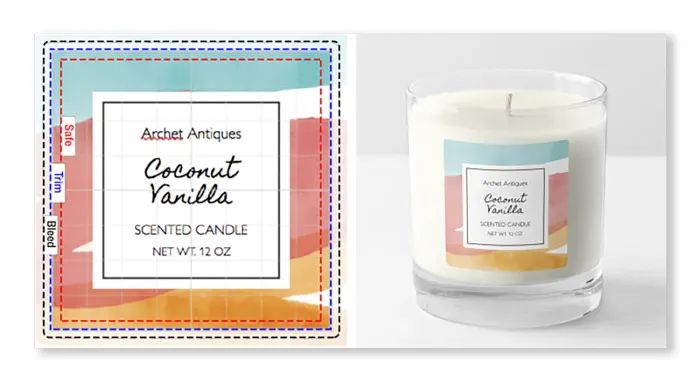Why Am I Getting Frosting On My Candles?
Have you ever lit a candle and noticed after burning for a while that a buildup of whitish crystals forms on the surface around the wick? This phenomenon is commonly referred to as frosting or sweating and happens when components of the wax migrate to the candle’s surface and crystallize. Although visually unappealing, frosting is typically harmless and does not impact how well the candle burns. There are several key reasons why frosting occurs which will be explained in more detail. By understanding the science behind what causes frosting, steps can be taken to prevent or minimize it.
Wax Chemistry
The wax used in most candles is paraffin wax, which is made from petroleum. Paraffin wax contains molecules called hydrocarbons, which are made up of hydrogen and carbon atoms. These hydrocarbon molecules can be very long chains, with some containing over 30 carbon atoms.
These long hydrocarbon chains give paraffin wax some special properties. The hydrocarbon chains are able to pack together in an ordered structure called a crystalline lattice. This allows paraffin wax to change between a liquid and solid state. When paraffin wax is heated above its melting point, the crystalline structure breaks down and the wax transforms into a liquid. When the liquid wax is cooled, the hydrocarbon chains come together again in the crystalline formation, turning the wax back into a solid.
This ability for paraffin wax to transition between solid and liquid states is key for candle making. The wax needs to be melted for pouring into the candle mold, and then resolidify into the finished candle. However, the crystallization process of wax will become important later when we look at how frosting occurs.
Wax Crystallization
Wax is composed of complex hydrocarbons that exist as a liquid when heated, but crystallize into a solid form as the wax cools. The crystallization process occurs because wax hydrocarbons have a unique structure and molecular weight that allows the molecules to stack together in an orderly fashion and form crystals.
As candle wax cools, the wax molecules lose kinetic energy and the motion of the molecules slows down. This allows the molecules to move close together and start aligning into a crystalline structure. The wax will begin crystallizing on the outer surface first, as this area is exposed to air and loses heat the quickest. Tiny wax crystals will start to form on the surface as the temperature drops below the wax’s melting point.
The wax crystals will continue growing outward on the surface as more molecules stack onto the structure. This crystalline network gives hardness and rigidity to the wax. The wax will completely transition from a liquid to a solid crystalline form as it cools to room temperature. This crystallization process on the outer wax surface is what causes frosting or blooming to occur on candles.
Candle Wick Capillarity
The wick is a crucial part of how a candle burns. The wick is made of fiber strands that are tightly braided or twisted together. This creates capillary spaces between the strands of the wick that act to draw up liquefied wax via capillary action as the candle burns.
Capillary action occurs when adhesive intermolecular forces between a liquid and a solid surface cause the liquid to flow upwards against gravity within narrow spaces. In a candle wick, the liquefied wax adheres to the fine fibers of the wick through capillary action. This draws the melted wax up through the wick, providing a continuous fuel source to the flame.
The wick in a candle acts like a pipe to deliver liquefied wax fuel to the flame. The section of the wick above the liquid wax pool vaporizes and burns off as the candle wax is consumed. Meanwhile, the capillary spaces within the lower portion of the wick below the wax pool soak up more liquefied wax via capillary action, sustaining the capillary flow of fuel to the flame.
Wick capillarity is crucial for a properly burning candle. The wick needs to be absorbent enough to bring wax upwards, but also sturdy enough not to bend over into the wax pool or mushroom at the tip. Getting the right balance allows for an even, sustained burn.
Heat Gradient
The flame at the tip of the wick creates a heat gradient in the melted wax pool. The wax closest to the flame is the hottest, while the wax at the edges of the pool is cooler. As the wax melts from the heat of the flame, it transitions from a solid to a liquid state. However, the melted wax at the outer edges of the pool is slightly cooler than the wax directly adjacent to the wick. This temperature difference allows wax crystals to begin forming at the edges of the melted wax pool, resulting in a frosting effect on the candle.
The heat from the flame causes the solid wax to melt, creating a liquid wax pool. But this heat dissipates as it radiates outward from the wick. The edges of the pool are just cool enough for wax crystals to start taking shape, while the wax closer to the flame remains hot enough to stay liquid. This temperature gradient within the melted wax pool allows solid wax crystals to form at the cooler edges, even as the candle continues burning.
Air Exposure
When a candle is lit, the flame melts the wax into a liquid state. This melted wax then travels up the wick where it vaporizes and burns. As the wax burns, it leaves behind an empty space next to the wick which allows air to circulate close to the melted wax pool.
This exposure to air is a key factor in allowing wax frosting to form. Air is cooler than the melted wax, so the air cools the outer layer of liquid wax rapidly. This quick cooling prevents the wax molecules from aligning properly as they solidify, causing them to form into crystals instead. The air also delivers more oxygen to the wick, making the flame burn hotter and faster. This accelerates melting and can enlarge the wax pool, exposing even more surface area to the air.
So in summary, air exposure allows the melted wax to cool and crystallize more quickly before the molecules can realign. This effect is enhanced by the increased burning rate caused by additional oxygen from the air. Reducing air circulation above the melted wax pool can help minimize frosting.
Environmental Conditions
The environment around a burning candle can play a significant role in promoting or preventing frosting. Factors like humidity, drafts, and temperature fluctuations can accelerate the process of wax crystals forming on the candle and wick.
Higher humidity provides more moisture that can interact with the melted wax. As wax vapor leaves the flame and condenses, the extra moisture helps it solidify faster into crystalline formations on the wick. Any draft or rapid air current also speeds up cooling of the rising wax vapors, causing them to crystallize quicker before reaching the top of the flame.
Candle wax melts at around 150-200°F during burning. But drops in temperature, either from an air conditioner or opening a window, will make the wax start solidifying sooner. This allows crystals to start accumulating on the wick and around the melt pool. Maintaining a stable, draft-free room temperature helps reduce frosting by keeping the wax in a melted liquid state longer.
In summary, humidity, drafts, and temperature fluctuations all contribute to accelerated crystal formation in candle wax. Avoiding these environmental conditions as much as possible will help minimize frosting issues. Proper candle placement also reduces air currents around the flame, keeping the wax melted for longer.
Wax Additives
Additives like dyes and fragrance oils are commonly added to candle wax to provide color and scent. However, these additives can impact how the wax crystallizes and lead to frosting issues. The additives essentially act as impurities in the wax, disrupting the wax crystal structure.
Dyes contain pigment particles that provide color but also interfere with wax crystallization. The particles disrupt the formation of crystals, leading to smaller crystal size and more crystal defects. This makes the wax crystals more prone to frosting. Darker dyes tend to have a greater effect since more pigment is required to achieve a dark color.
Fragrance oils are composed of different volatile organic compounds that provide scent through evaporation. However, these oil molecules get trapped within the growing wax crystals, distorting their shape and structure. The disrupted crystal formation leads to more imperfections and chances for frosting. Strongly scented candles tend to have more issues.
The more additives used in a candle wax, the greater the risk of frosting. Keeping dyes and fragrance oils to a minimum can help reduce disruption to wax crystallization. Testing different dye and fragrance levels during formulation is key to balancing appearance and scent with reducing frosting.
Preventing Frosting
There are several tips for preventing frosting and crystallization on candle wax:
- Trim wicks to 1⁄4 inch before lighting to avoid smoke and excess heat which can create ideal conditions for crystallization.
- Avoid placing candles near drafts from windows, vents or fans which can cool wax unevenly and increase frosting.
- Use wax additives like vybar or parasoy that inhibit crystallization and increase oil content in the wax.
- Avoid excessive fragrance loads above 10% as extra fragrance oil can initiate crystallization.
- Pour candles in warmer ambient temperatures around 75°F which keeps wax fluid for longer.
- Allow candles to cure 2-3 weeks after pouring to stabilize and prevent frosting.
- Burn candles in a temperature stable environment without drafts.
- Trim black soot from wicks between burns to maintain a clean burn.
Following basic candle care tips like trimming wicks, stabilizing wax, and avoiding temperature swings during burns can help minimize frosting. Adding wax additives as crystallization inhibitors is also an effective way to reduce frosting.
Conclusion
In summary, frosting on candles is primarily caused by four key factors: wax crystallization, wick capillarity, heat gradient, and air exposure. As the wax cools, crystals form on the surface, drawing melted wax up the wick where it solidifies into frosting. This process is exacerbated by an uneven heat gradient and exposure to air currents. To prevent frosting, use wax with a higher oil content, ensure an even burn pool, protect candles from drafts, and trim wicks to 1⁄4” before each burn.
By understanding how wax chemistry, crystallization, capillarity, and environmental conditions contribute to frosting, steps can be taken to minimize it. Testing different waxes, wick types/lengths, jar shapes, and protective covers can help optimize the candle system. But some frosting may be inevitable, and is not hazardous. The most foolproof way to avoid it entirely is to extinguish candles before complete liquid wax pool-out.





